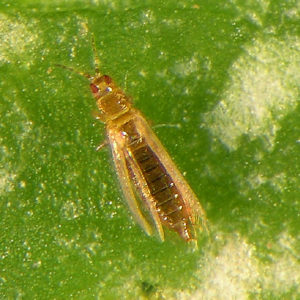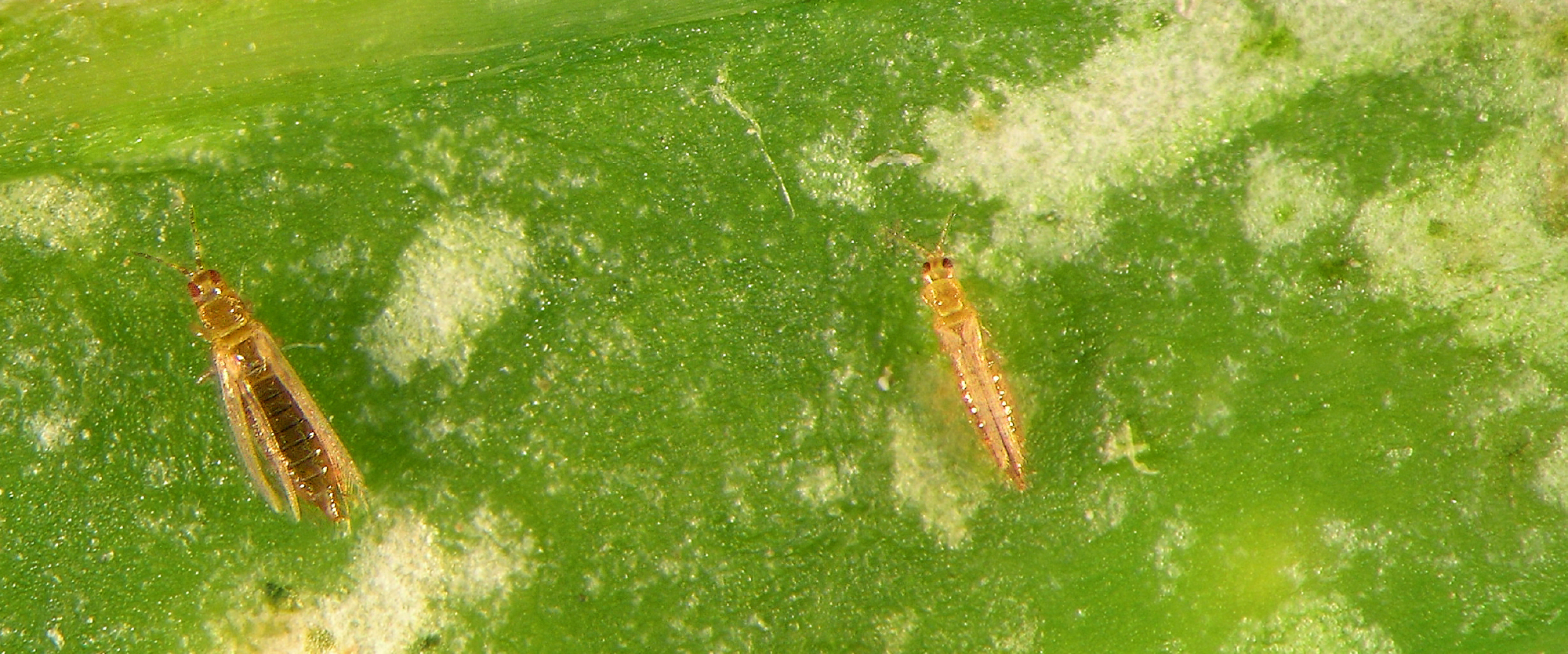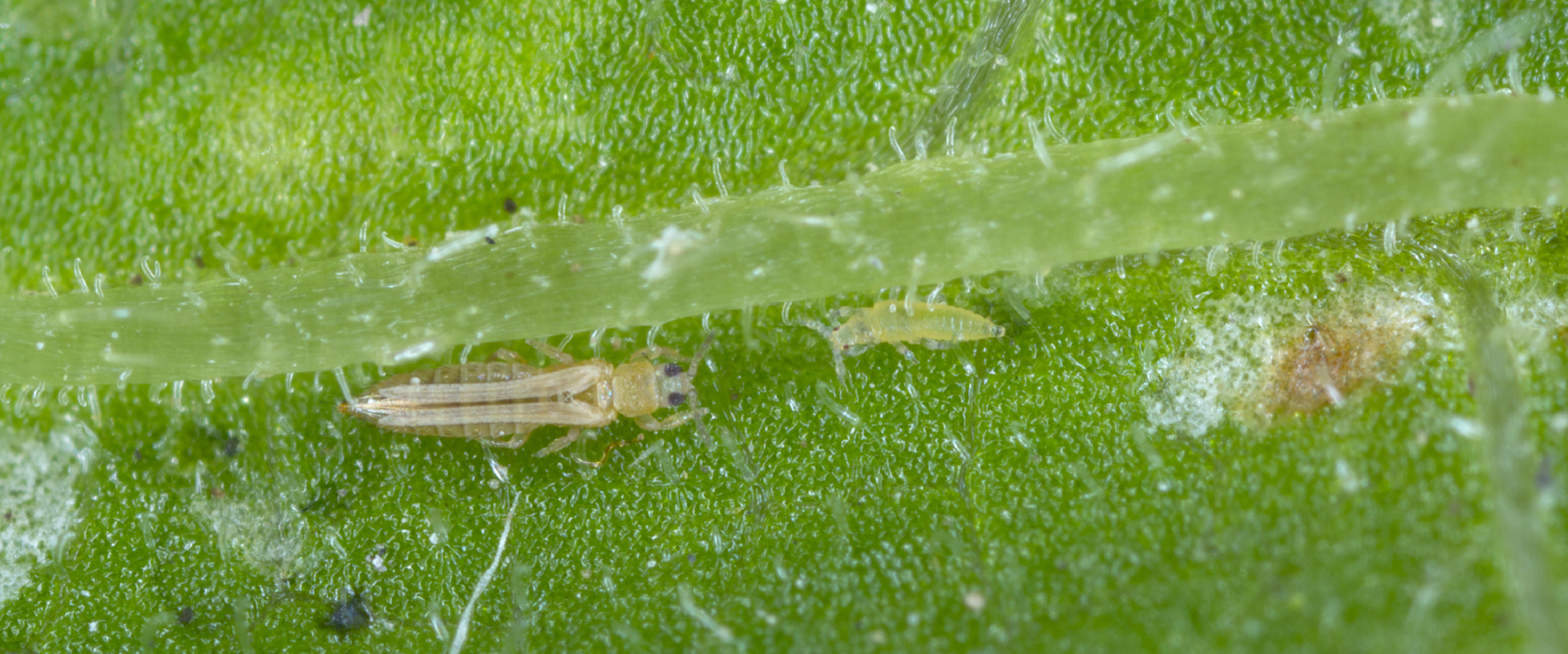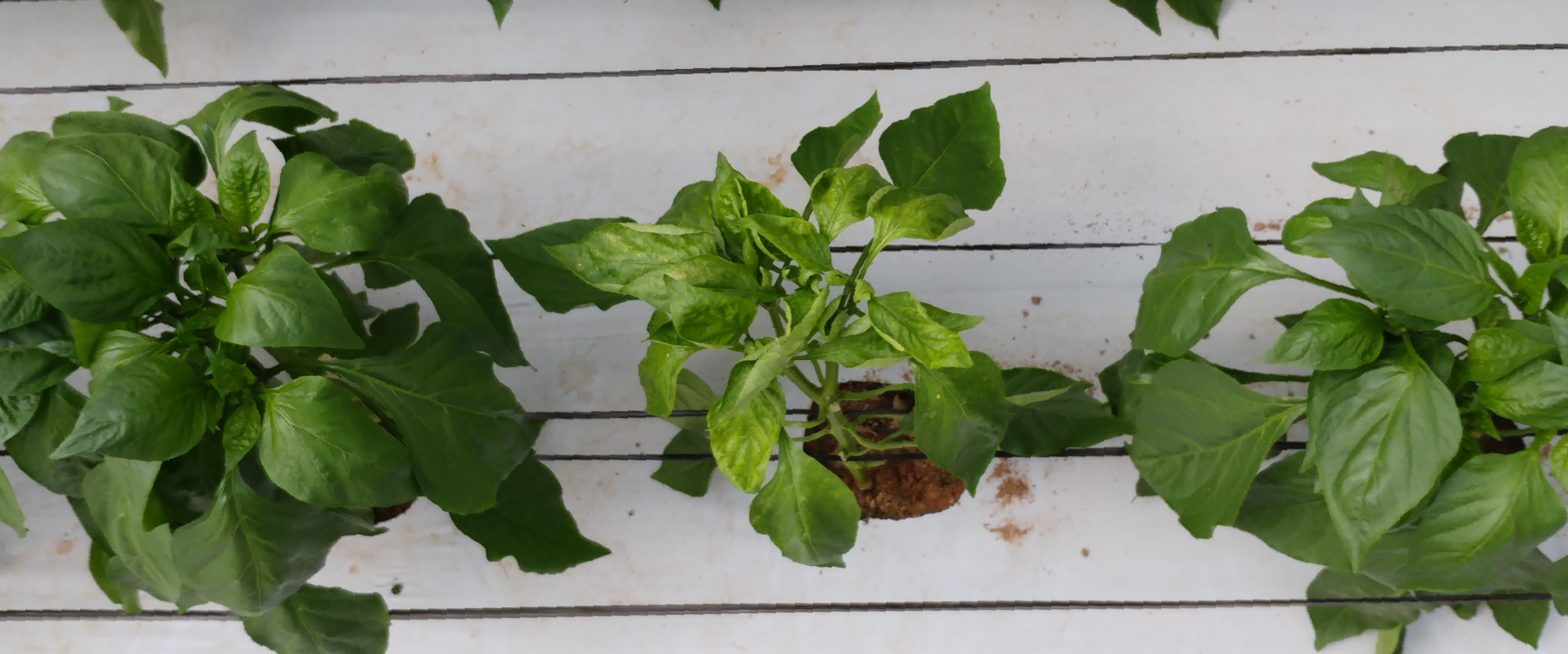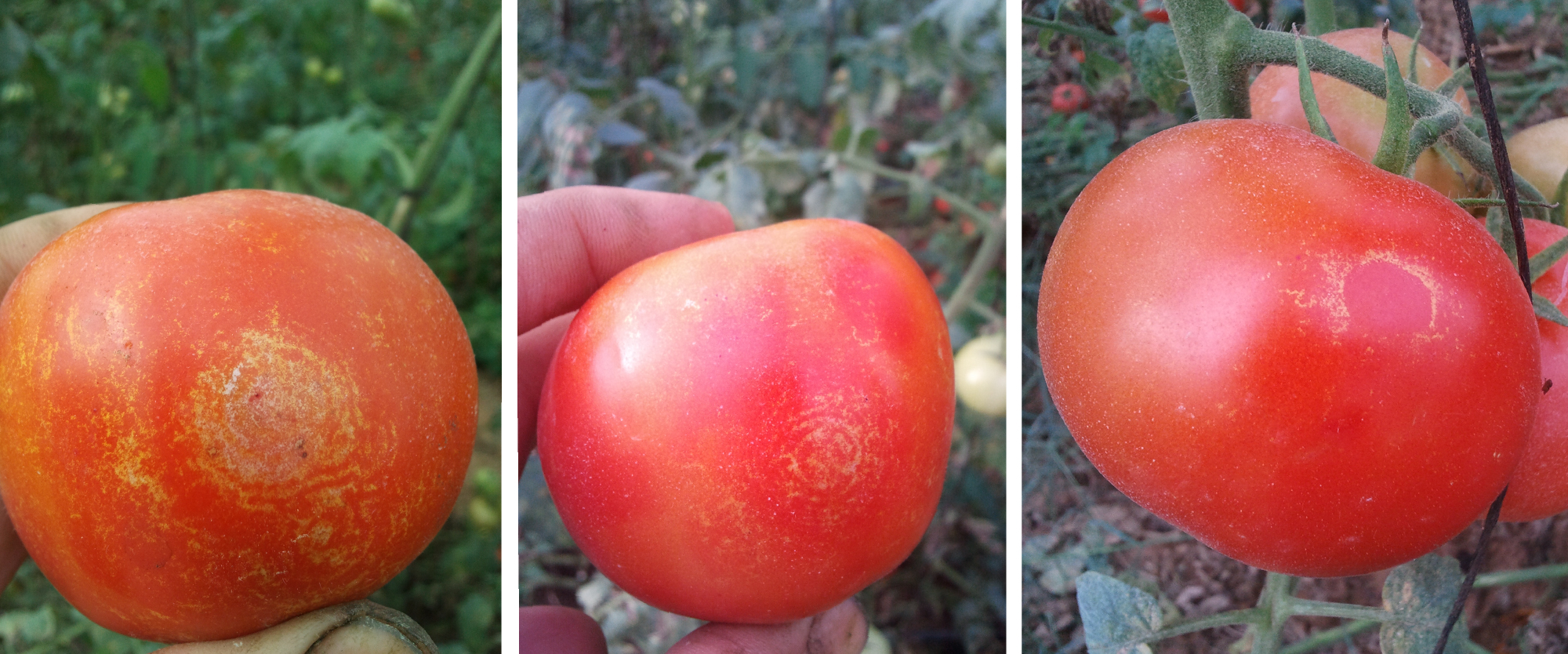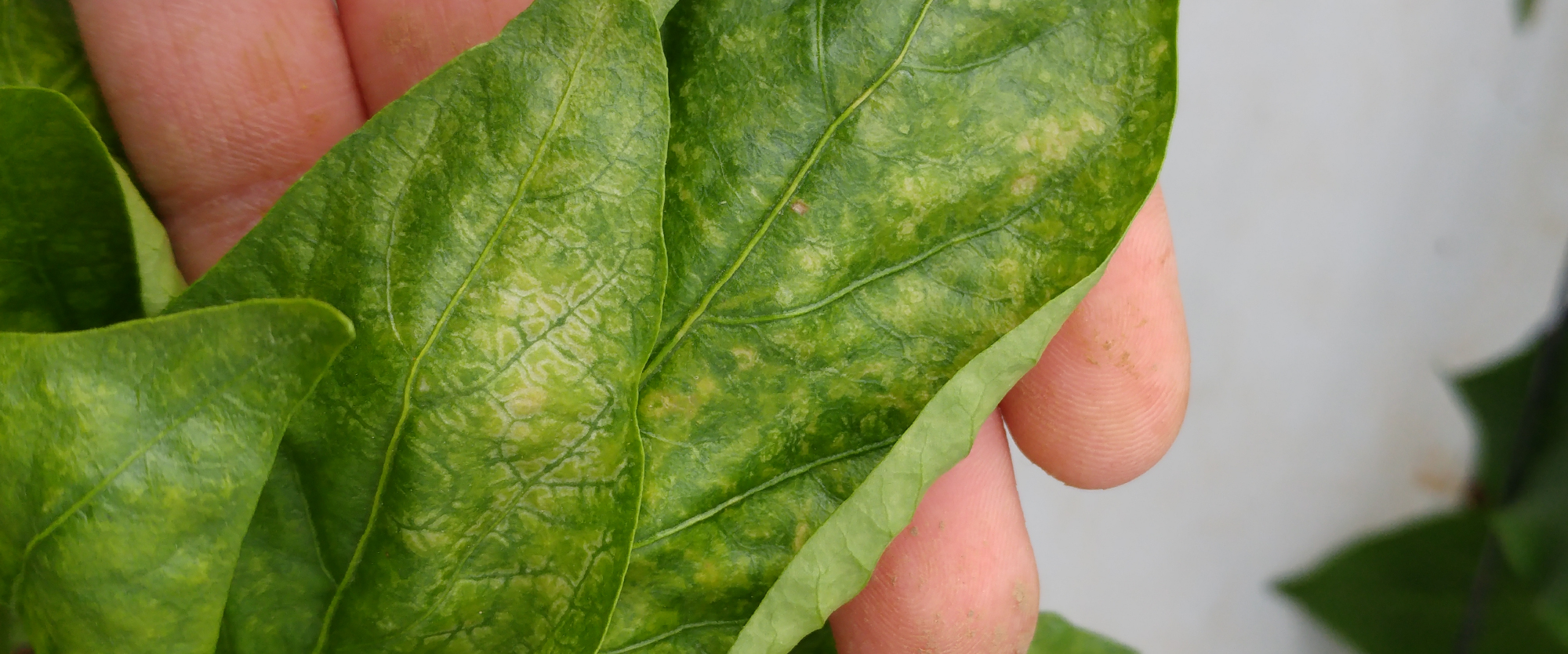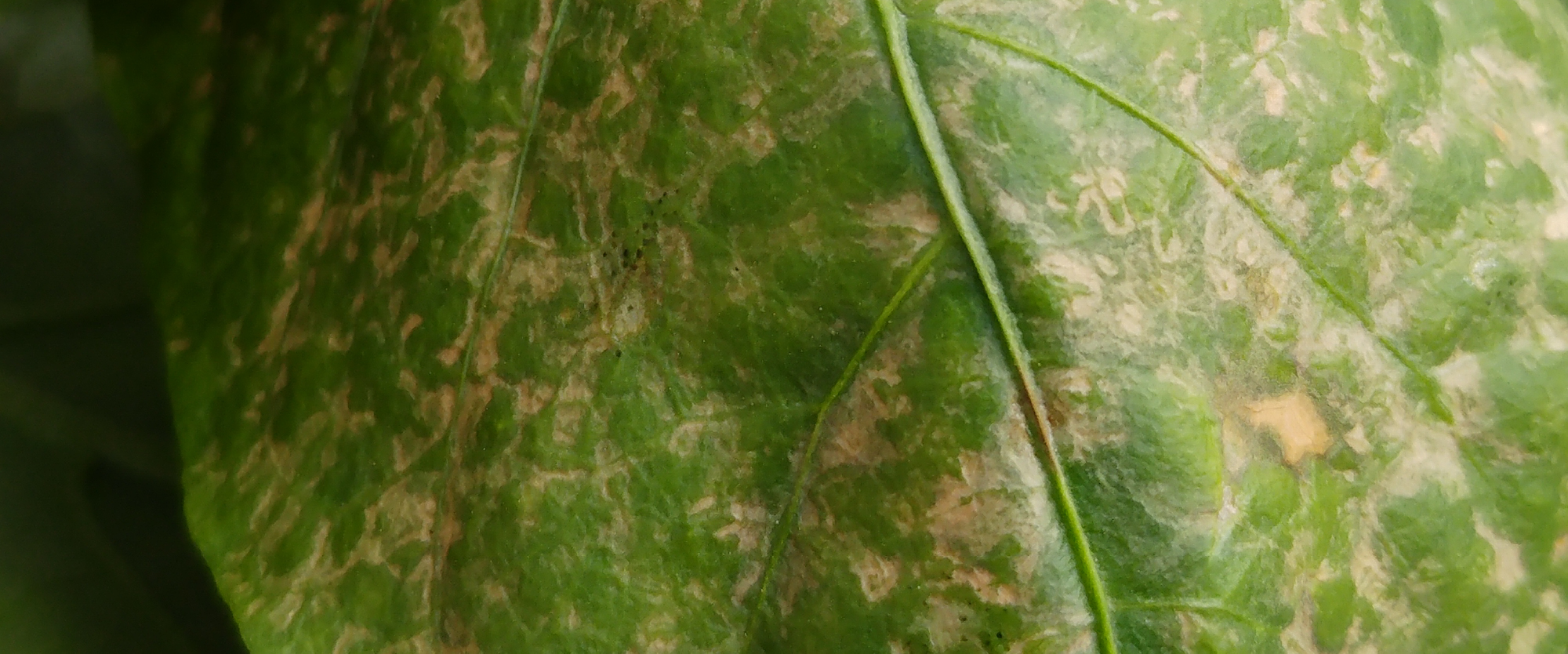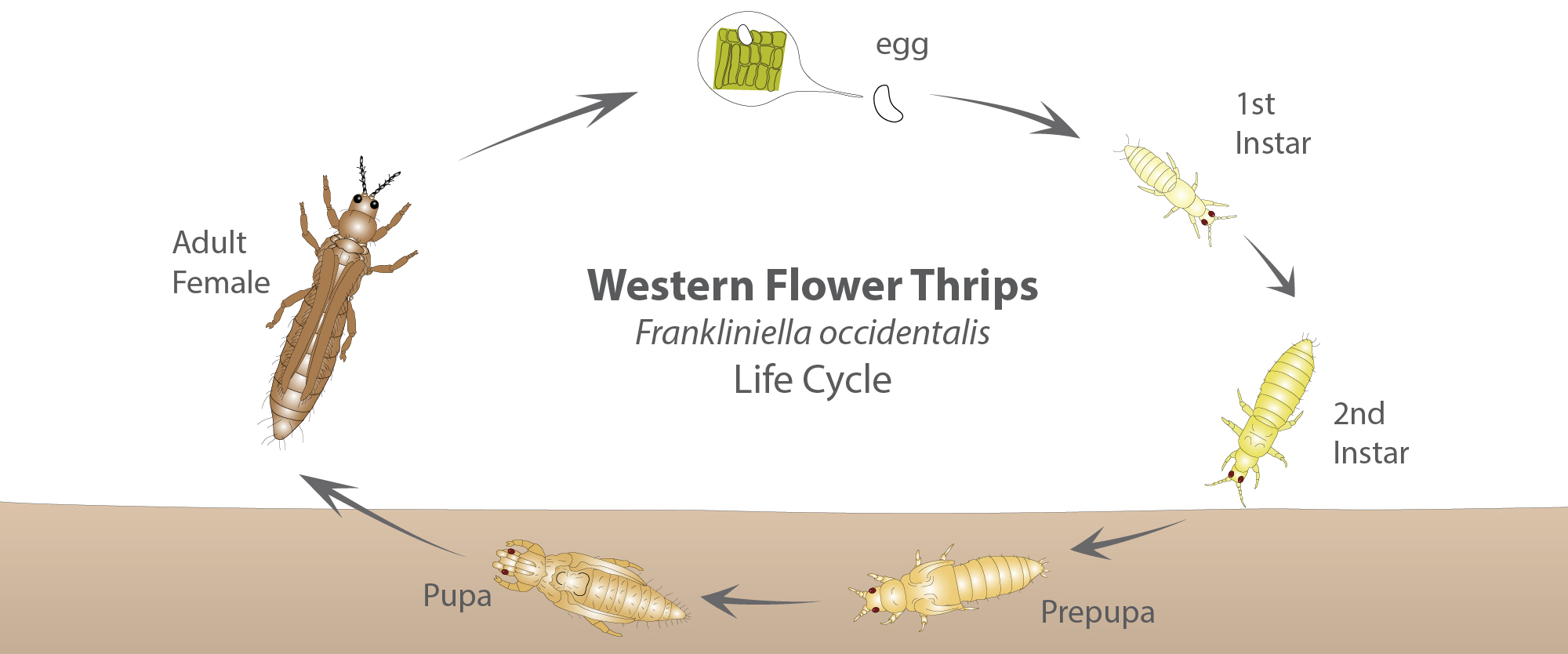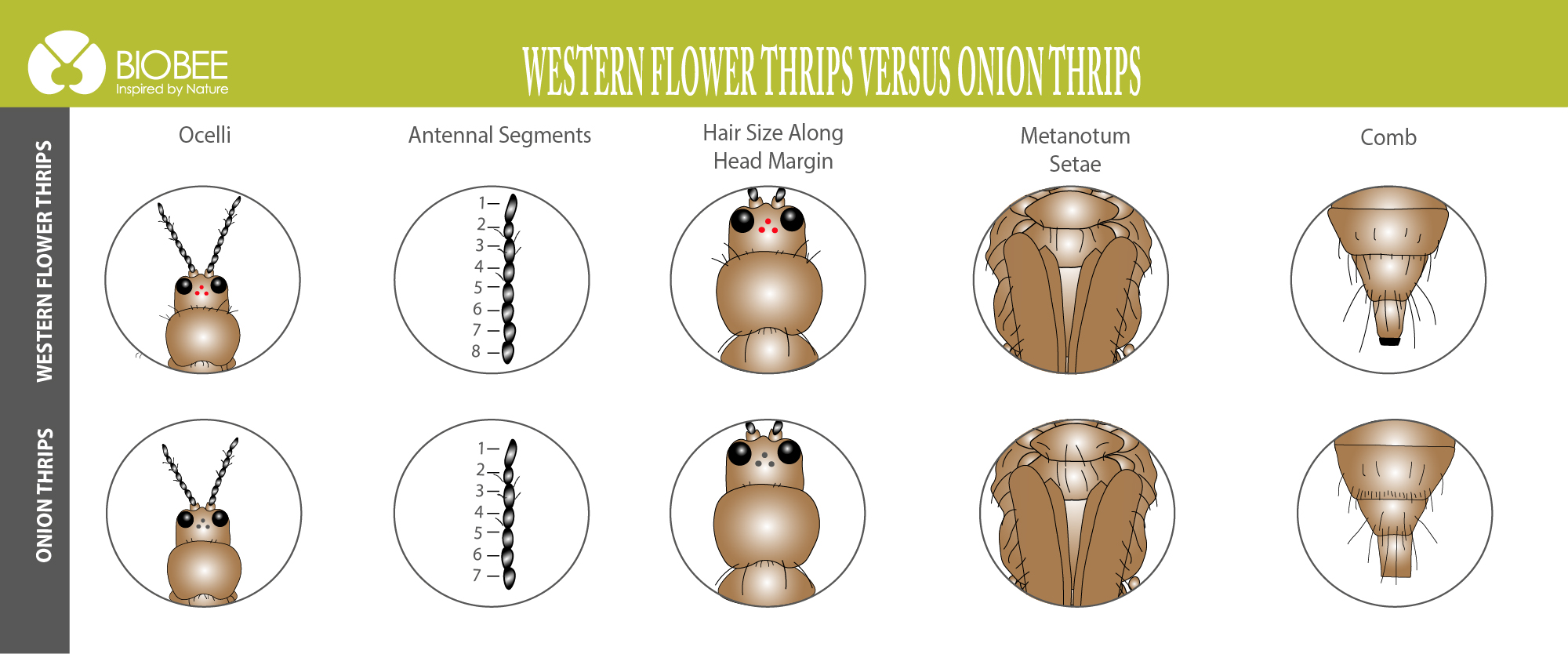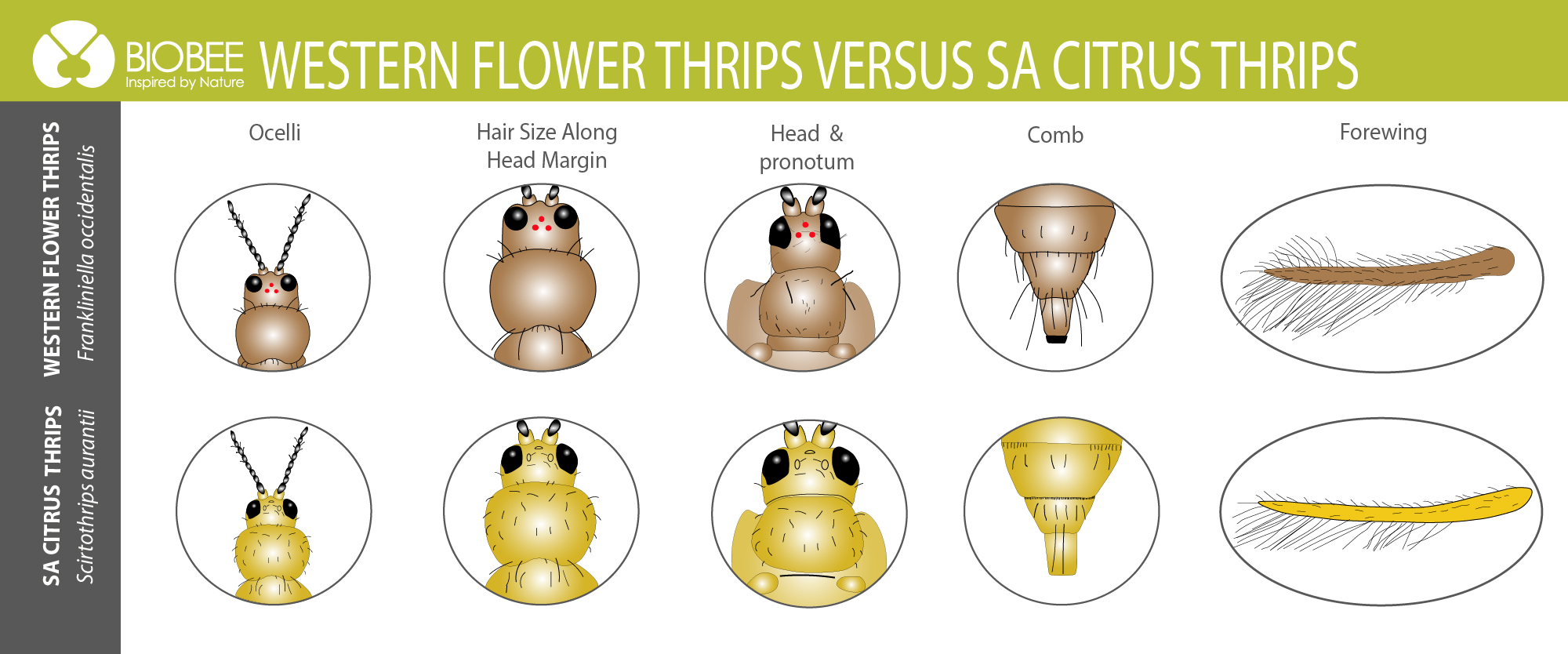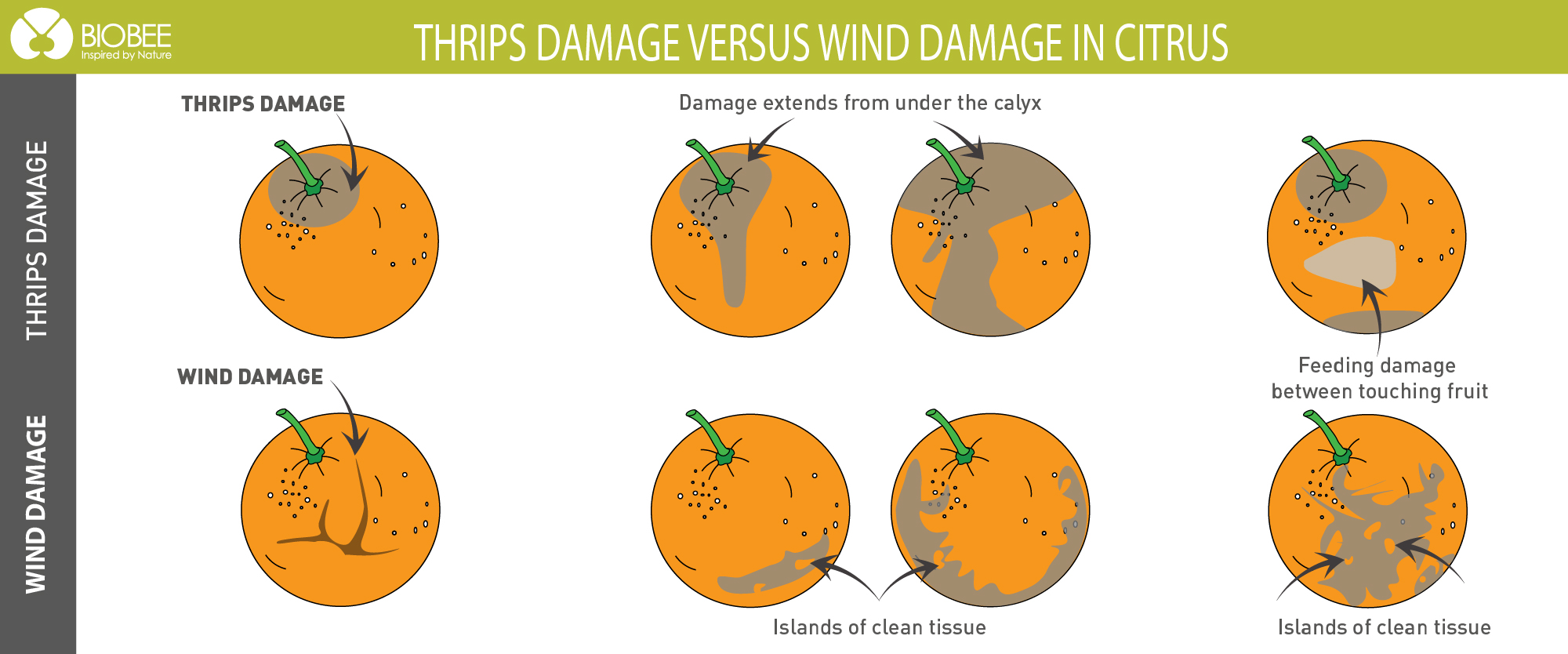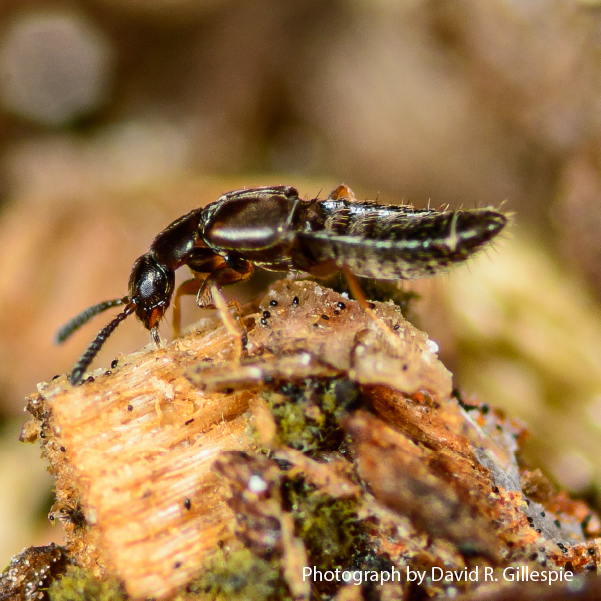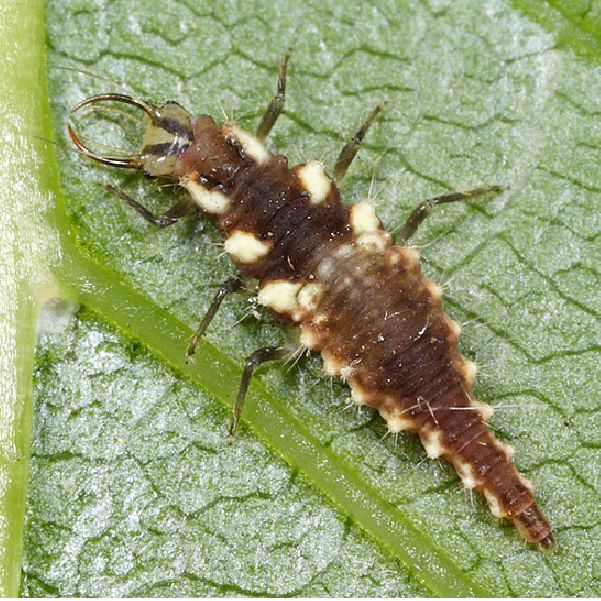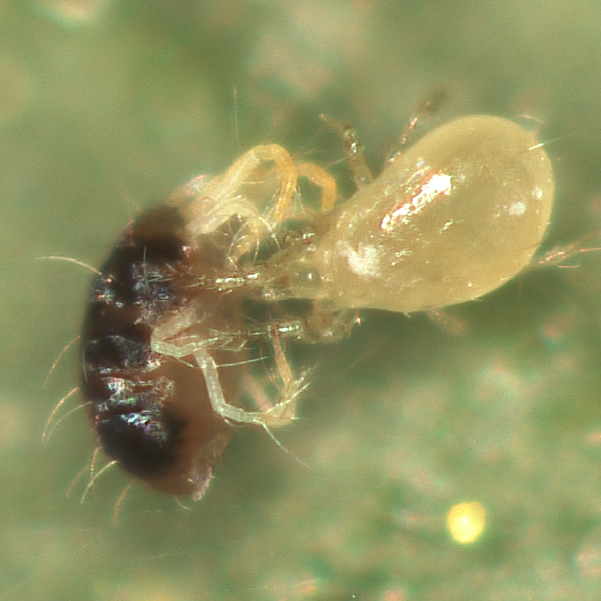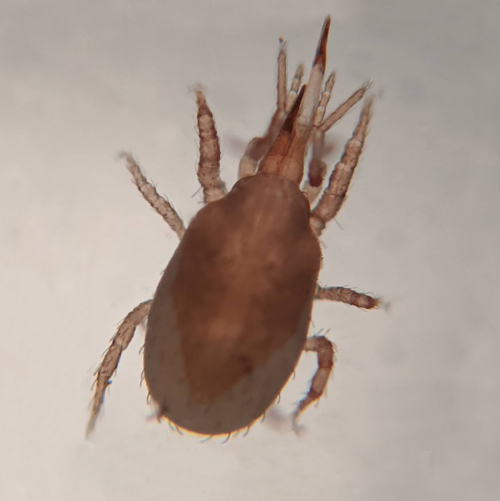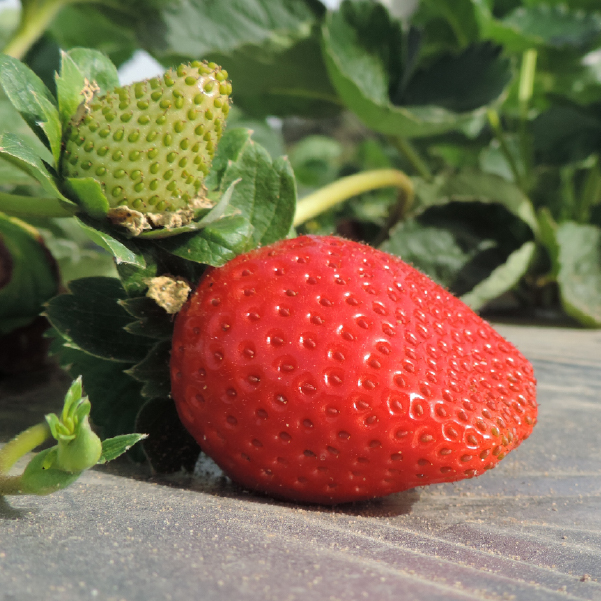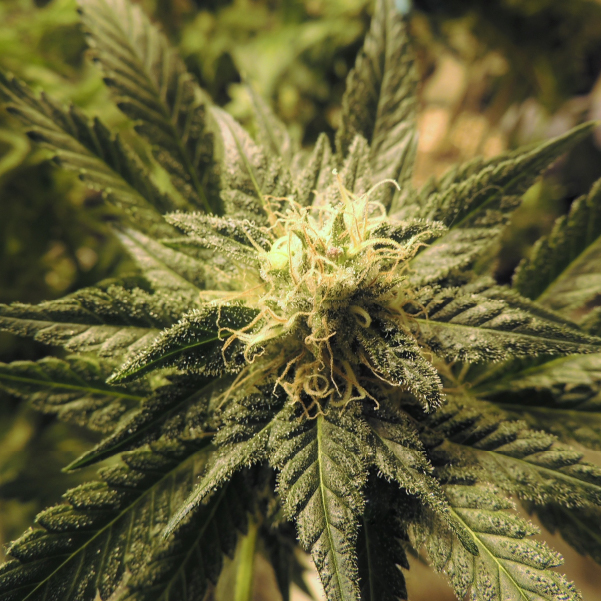The western Flower Thrips (Frankliniella occidentalis) is a worldwide pest with a wide range of host plants. A year-round invasive pest, they are less destructive during wet weather. The western flower thrips is a small insect with a narrow body (up to 1.2 mm in length) and yellowish in color. The male is smaller and lighter in color than the female; both have feathered wings and in the resting state they form a dark line along the back (where the wings meet).
Damage
The thrips cause direct and indirect damage to its host plants by scratching their tissues and sucking sap. The direct damage takes the form of chlorophyll content reduction and yellowing of foliage, accompanied sometimes by dehydration and defoliation. The damage to the flowers appears as light spots on the petals, necrosis, blackening of the margins of the petals and discoloration of the flowers. Various disease vectors, such as Botrytis and Alternaria, may penetrate via the feeding sites. On the fruit, there are a number of typical damage signs: silvering in sweet pepper, bronzing in strawberry, malformation in cucumber, and small perforations in tomato. In addition, there is a decrease in yield as a result of the falling off of fruit. The indirect damage is caused by the transfer of a harmful viral disease, Tomato Spotted Wilt Virus (TSWV).
There are specific natural enemies for different species of thrips.
For more information contact your local BioBee field agent.
